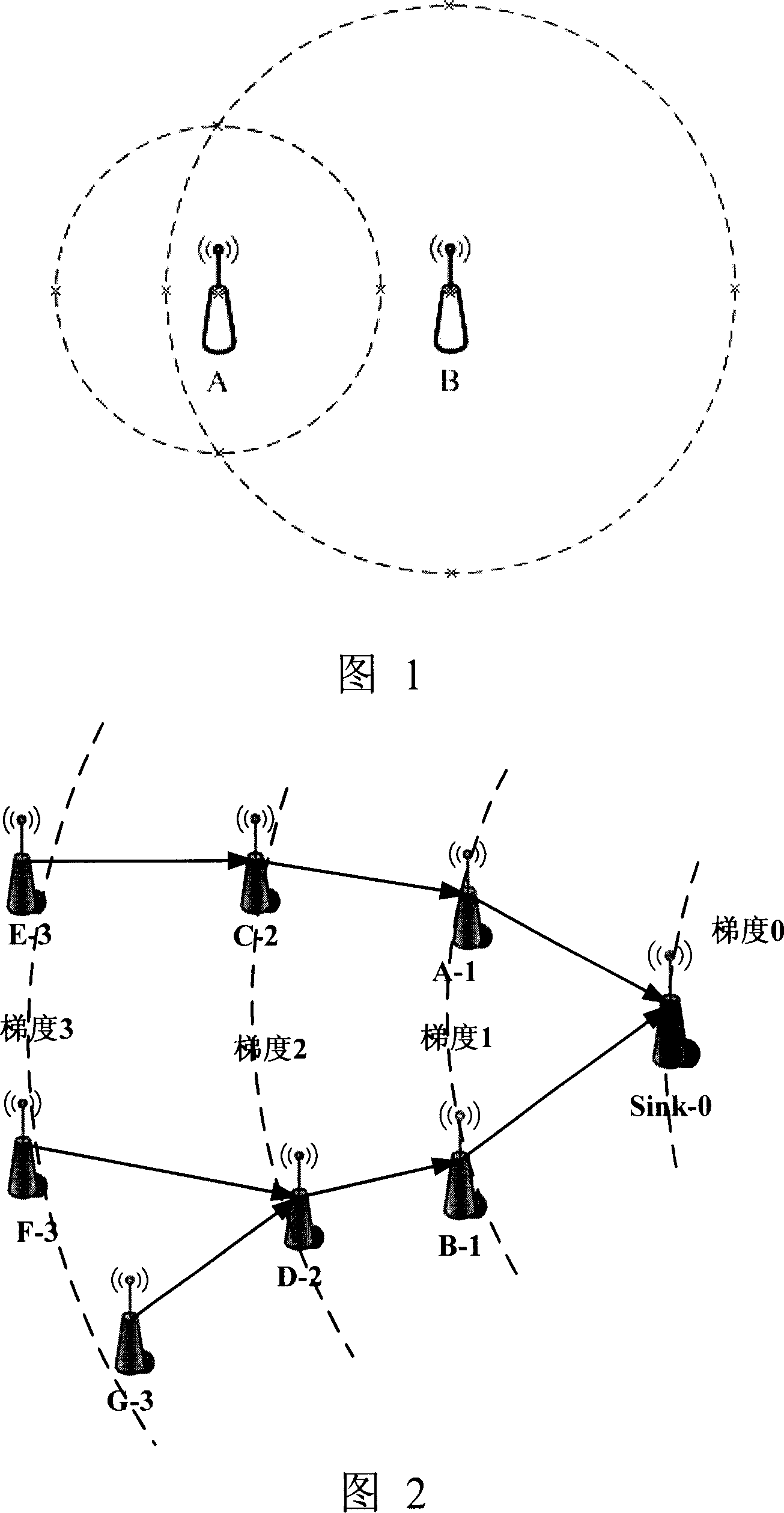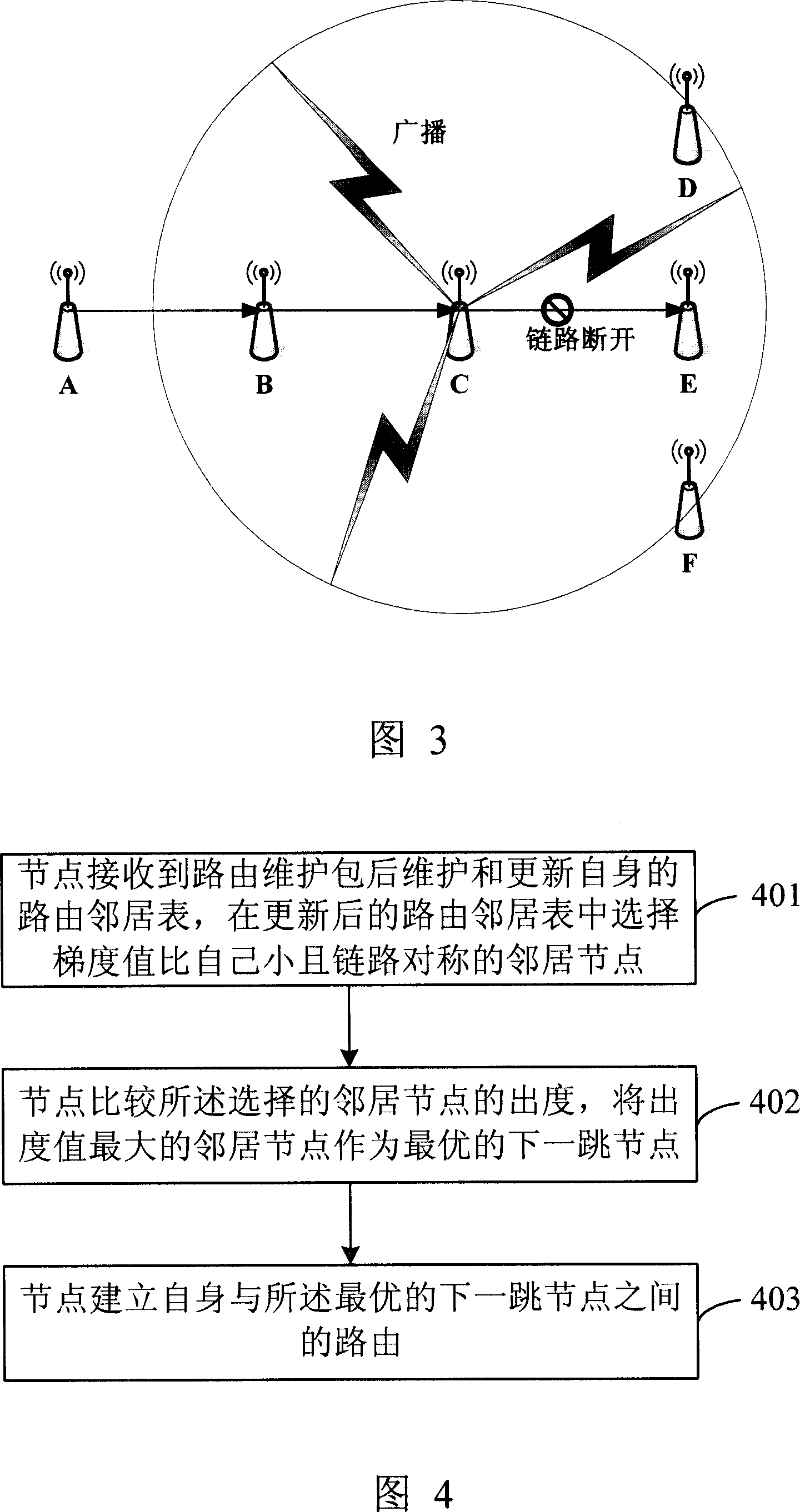Method for establishing radio sensor network rout ebased on route neighbour list
A technology of wireless sensors and neighbor tables, applied in data exchange networks, transmission systems, digital transmission systems, etc., can solve the problems of not supporting node movement, excessive overhead, and only supporting small-scale networks, etc., to solve unstable performance, The effect of small routing overhead and improved stability
- Summary
- Abstract
- Description
- Claims
- Application Information
AI Technical Summary
Problems solved by technology
Method used
Image
Examples
Embodiment
[0095] The invention provides a method for establishing a wireless sensor network route based on a routing neighbor table. Only nodes running the protocol are randomly distributed in concerned areas, and the nodes can automatically operate and establish a network.
[0096] It should be noted that the ID numbers of these nodes scattered in an area cannot be the same, and at the same time, it is necessary to ensure that the amount of information in the network cannot exceed the effective bandwidth supported by the nodes, which can be achieved by limiting the number of nodes. When these tasks are completed, the data of each node can be received at the sink node.
[0097] In the present embodiment, the operation process of the network routing method is introduced in detail with the network composed of 8 nodes described in Fig. 2:
[0098] 1. Turn on all 8 nodes, put the sink node in the designated location (usually the user control room), and randomly distribute the other 7 nodes ...
PUM
 Login to View More
Login to View More Abstract
Description
Claims
Application Information
 Login to View More
Login to View More - R&D
- Intellectual Property
- Life Sciences
- Materials
- Tech Scout
- Unparalleled Data Quality
- Higher Quality Content
- 60% Fewer Hallucinations
Browse by: Latest US Patents, China's latest patents, Technical Efficacy Thesaurus, Application Domain, Technology Topic, Popular Technical Reports.
© 2025 PatSnap. All rights reserved.Legal|Privacy policy|Modern Slavery Act Transparency Statement|Sitemap|About US| Contact US: help@patsnap.com


